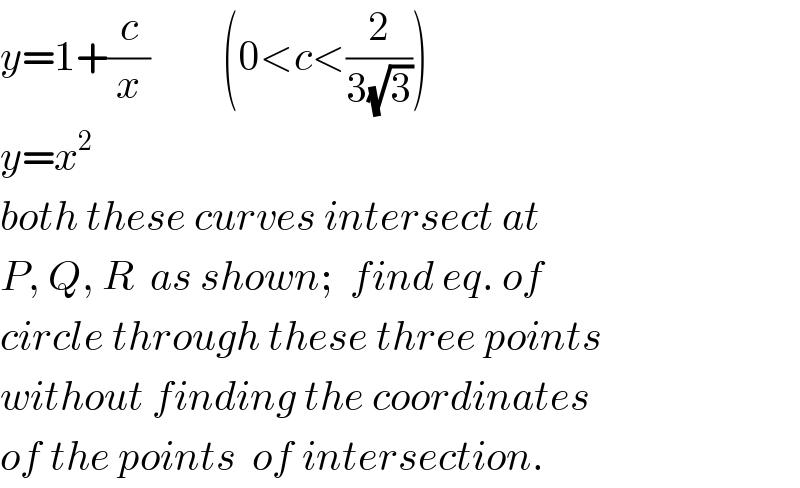
Question and Answers Forum
Question Number 122456 by ajfour last updated on 17/Nov/20

Commented by ajfour last updated on 17/Nov/20

Answered by ajfour last updated on 21/Nov/20

Commented by mr W last updated on 21/Nov/20

Commented by ajfour last updated on 21/Nov/20
thanks sir!
